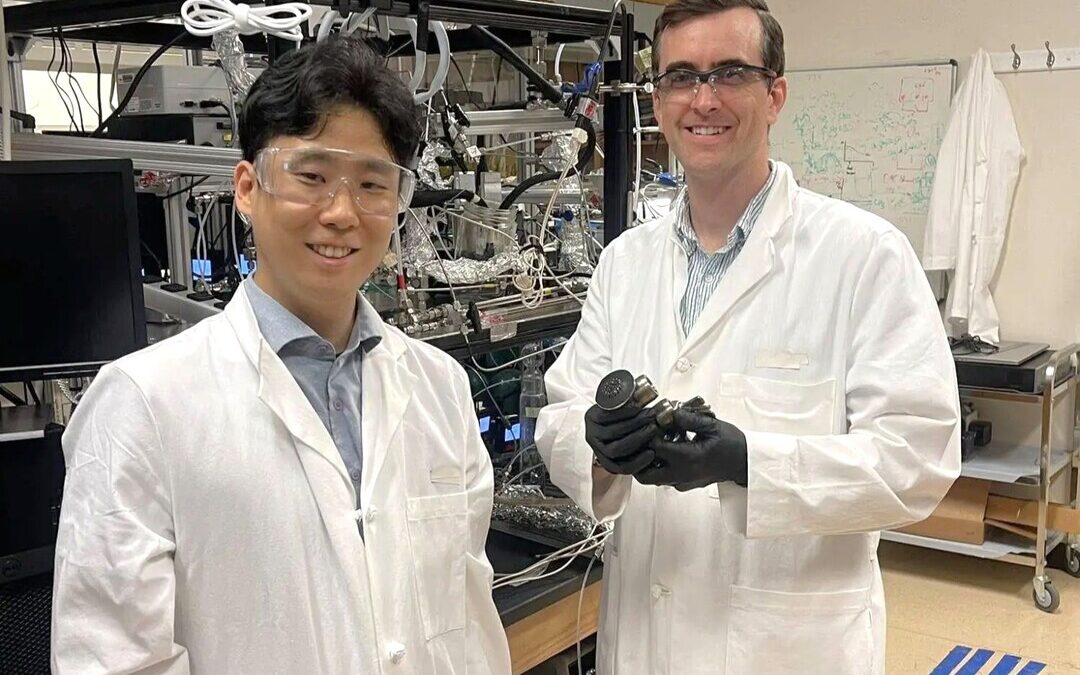Researchers Turn to LNG Cold Energy for Cheaper, More Efficient CO2 Removal
A new method utilizes LNG cold energy and porous materials to reduce carbon capture costs and enhance efficiency.
A team of researchers at the Georgia Institute of Technology has unveiled a cost-effective technique for removing carbon dioxide from the atmosphere using extremely cold temperatures and widely available materials, potentially advancing global efforts to mitigate climate change.
The approach, detailed in a study published in Energy & Environmental Science, leverages cold energy produced during the regasification of liquefied natural gas to improve the efficiency and reduce the costs of direct air capture technology, a field that has struggled with high capital and energy demands.
Tapping into Unused Cold Energy
In collaboration with scientists from Oak Ridge National Laboratory in Tennessee and universities in South Korea, the Georgia Tech team utilized LNG’s regasification process — a common industrial practice that typically releases cold energy into the environment — to chill the air and enhance CO₂ absorption.
“By chilling air using cold energy from LNG, we create a more favorable environment for capturing CO₂,” said Ryan Lively, professor of chemical and biomolecular engineering at Georgia Tech. “This is an exciting step forward. We’re showing that you can capture carbon at low costs using existing infrastructure and safe, low-cost materials.”
The process relies on “physisorbents,” porous solids that physically absorb CO₂. These materials outperform traditional amine-based sorbents — commonly used in DAC — for longevity and energy efficiency, particularly when moisture is removed from the air at low temperatures.
Lower Costs, Higher Efficiency
Economic models from the research suggest the technique could cut the cost of CO₂ capture to approximately $70 per metric ton, down from current industry estimates that often exceed $200 per ton.
Key materials identified in the study include Zeolite 13X, a cost-effective desiccant used in water treatment, and CALF-20, a metal-organic framework known for capturing CO₂ from flue gas.
When tested at -78 degrees Celsius, both materials demonstrated CO₂ capture capacities roughly three times higher than amine-based systems operating at ambient temperatures.
“Beyond their high CO₂ capacities, both physisorbents exhibit critical characteristics such as low desorption enthalpy, cost efficiency, scalability and long-term stability,” said lead author Seo-Yul Kim, a postdoctoral researcher at Georgia Tech.
Coastal Deployment Potential
The researchers also emphasized the potential for wide deployment of their system. Traditional DAC systems are most effective in dry, cool locations; however, by coupling this approach with LNG infrastructure, the method can be deployed in temperate and humid coastal areas where LNG terminals are already operational.
“LNG regasification systems are currently an untapped source of cold energy,” said Lively. “By harnessing even just a portion of their cold energy, we could potentially capture over 100 million metric tons of CO₂ per year by 2050.”
The study further suggests that near-cryogenic conditions expand the range of usable physisorbents for DAC. Materials previously unsuitable for carbon capture at ambient temperatures may now be viable, offering a broader toolkit for researchers and industry.
“This unlocks a whole new design space for carbon capture materials,” said co-author Matthew Realff, professor at Georgia Tech.
The research team plans to continue refining materials and scaling system designs to support broader commercial adoption.
Also Read:
Aramco launches Saudi Arabia’s first CO2 Direct Air Capture test unit
Nirmal Menon
Related posts
Subscribe
Error: Contact form not found.


